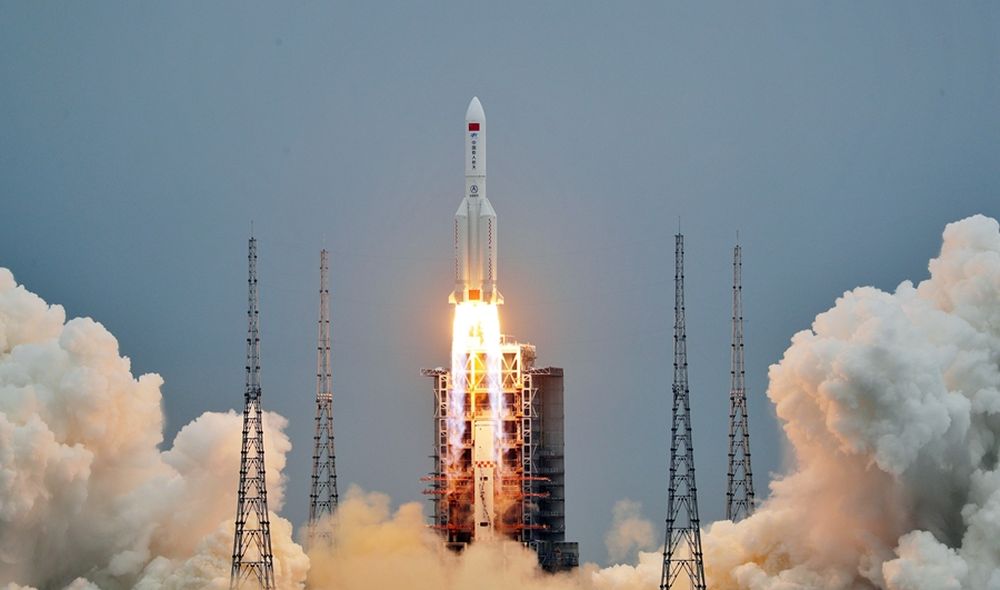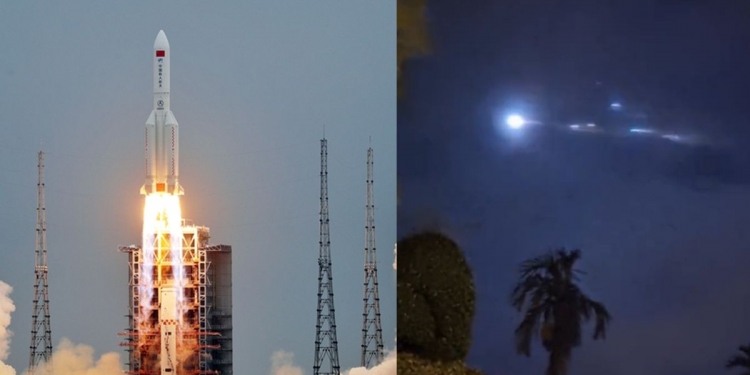[ UPDATE 1/08/2022 22:00 ] Alleged debris from China’s Long March 5B rocket found in Sarawak and West Kalimantan.
===
Early this morning at approximately 1:00am, there have been sightings of what appears to be a meteor shower in Malaysia’s eastern state of Sarawak. Several witnesses have shared photos and videos of the event on social media. Turns out it isn’t a meteor shower and the Malaysian Space Agency (MYSA) via Ministry of Science, Technology and Innovation has confirmed that it is actually the re-entry of debris from China’s Long March 5B rocket.
meteor spotted in kuching! #jalanbako 31/7/2022 pic.twitter.com/ff8b2zI2sw
— Nazri sulaiman (@nazriacai) July 30, 2022
According to the statement, the debris were detected at 00:55am on 31st July 2022 Malaysian Time and were burning up as it re-enters the earth’s atmosphere. The burning debris have crossed the Malaysian airspace and it was detected in several locations around Sarawak. It was reported that the debris entered at 9°N 119°E around the Sulu Sea near Palawan in the Philippines.
Yesterday, MOSTI assured that Malaysians have nothing to worry about as the likelihood of rocket debris falling onto people and building structures are low considering 70% of the earth’s surface is water and Malaysia’s land area is small. At the time, it was forecasted that the debris will re-enter at a latitude of 31.9° and longitude of 148.9°. However, this was merely an estimate as it is hard to pinpoint the exact location until just hours before the re-entry of the rocket debris.
So far there’s no reports of loss of life or damage following the re-entry of the Long March 5B rocket. In most cases, space debris tend to burn up completely upon re-entry but there’s always a risk of residuals hitting the ground.

China launched its Long March 5B rocket (Flight GB-Y3) into space on 24th July 2022 from Wenchang, Hainan. It carried a Wentian laboratory module for its Tiangong space station. The module docked with the Tianhe Core Module about 13 hours after launch and it is used for researchers to conduct science experiments in zero gravity. It also has an external cargo rack to conduct experiments with exposure to space environments, cosmic rays, vacuum and solar winds.
BREAKING! Wentian Laboratory Module has docked with Tianhe Core Module. Shenzhou-14 astronauts will later enter the new lab module#CZ5B #Wentian https://t.co/bAnANc9mKh pic.twitter.com/USUp8frkgg
— China ‘N Asia Spaceflight 🚀🛰️🙏 (@CNSpaceflight) July 24, 2022
Earlier this week, there were concerns about China’s Long March 5B rocket as it begins an uncontrolled fall back to earth from space. Various space agencies were keeping a close eye on the possible re-entry as there could be a risk of causing injury or damage if any leftover debris hit a populated area. Unlike most rocket launches where the core stages or boosters are disposed shortly after liftoff, the Long March 5B continues to head to orbit together with its payload before it re-enters back to earth.
The People’s Republic of China did not share specific trajectory information as their Long March 5B rocket fell back to Earth.
— Bill Nelson (@SenBillNelson) July 30, 2022
All spacefaring nations should follow established best practices, and do their part to share this type of information in advance to allow…
According to National Aeronautics and Space Administration (NASA) administrator Bill Nelson, the People’s Republic of China (PRC) did not share specific trajectory information for the Long March 5B rocket. He added that all spacefaring nations should follow established best practices and do their part to share this type of information in advance to allow reliable predictions of potential debris impact risk especially for heavy-lift vehicles like the Long March 5B which carries a significant risk of loss of life and property.
In April this year, large metal objects had fell in a village in the Maharashtra state of India and it is believed to be from China’s Long March 3B rocket which was launched in February 2021. It was reported that the ring measures 2-3 metres in diameter and weighs over 40kg. Fortunately there were no injuries or damage reported.
[ SOURCE 2, IMAGE SOURCE 2 ]








